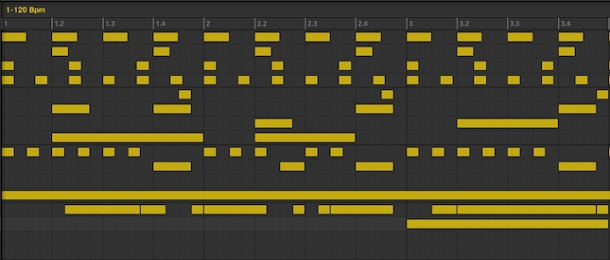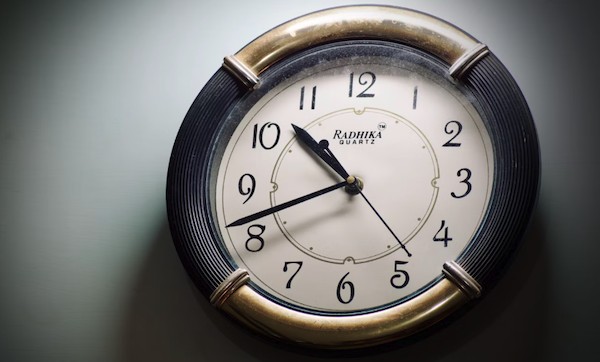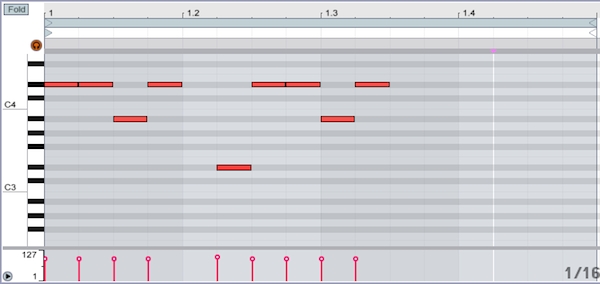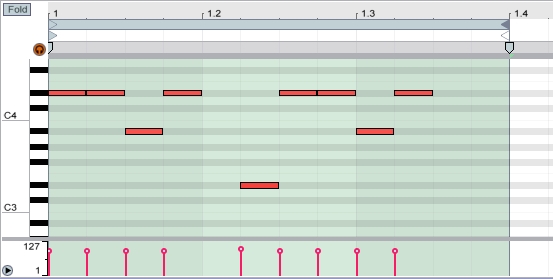
In today's article, I want to introduce you to a bit of music theory - don't worry though, rather than dipping into the more esoteric end of the spectrum, we're going to cover something more or less essential to just about all good dance music - cross-rhythms!
Cross-rhythms (sometimes also referred to as polyrhythms) are combinations of layered rhythmic patterns in different meters, or time signatures. The patterns are said to 'cross' as the downbeats, or first beats of the bar, do not necessarily occur together, or where the listener might expect. This leads to all sorts of interesting syncopations and grooves that can elevate a basic 4-to-the-floor beat far beyond mere metronomic mediocrity!

Born from African musical traditions and used to varying degrees of complexity across the continent, cross-rhythms tend to feature in Western forms in a much simpler and limited fashion, though given the close ties between House, Techno and all things Africa, they often play an important role on the dancefloor.
The main challenge with cross-rhythms is performing them live - whether that takes the form of a solo musician trying to co-ordinate 2 different limbs, or a group trying not to throw each other off the pulse. Luckily for those of us programming electronic music with machines and in DAWs, we don't have to worry too much about this problem (more on this later though)!
Crossing the Streams
With this article, I want to focus on applying cross-rhythms between synth and drum parts. Cooking something like this up within a basic House or Techno beat is really pretty straight-forward - you might already be doing it without even realising - and can be a quick and effective way to create rhythmic interest within your track.
To begin my demonstration, I've create a little slice of low-slung Deep House, featuring a guitar-like synth lick created using Ableton's native 'Operator' instrument:

The synth lick is just a simple three-note melody that spans one bar in 4/4. It sounds just fine as it is, if a little dull, so let's try to develop it a little. We could start by noodling around and adding some more notes, or what if we shortened the overall length of the phrase, taking it into a 3/4 time signature, played against the 4/4 drum pattern'
We can achieve this by dragged the 'Loop End' on the melody MIDI clip one beat to the left in Ableton Live (or simply shortening the length of a MIDI block in another DAW) - thus, the pattern will now repeat after three beats instead of four. Here's how this sounds:

Now, we haven't changed any of the notes but we've actually ended up with a new melody. Given that the rest of the track is still in 4/4, our melody 'crosses' the downbeat of the drum track when it repeats after three beats - the upshot of this is that we now have an evolving melody that spans three bars, instead of one, before it repeats again. All this accomplished with one simple drag of your mouse!
Cross-rhythmic Case Studies
Most of the time, the cross-rhythm technique would be applied to any track element other than the staple 4/4 kick, so as not to disrupt the 'danceability' of the track in question. However, rules are there to be broken and playing with the listener's sense of time and expectation can really make for devastating effects on the dancefloor! Here's a great example of a track in 3/4 time, with a cross-rhythm applied to the clave part in 3/8 time (appears at 3:40):
Sticking with Âme, one of the best examples of cross-rhythm use in Techno is arguably in their classic track 'Rej', which dominated dance-floors throughout the late 2000s. The track is often acknowledged as an anthem of the 'Minimal Techno' era, and while most of the musical elements within it are sparse and stripped-back, the unmistakably latin-infused melody incorporates a rhythmic complexity that really sets it apart from tracks released at the same time:
It's very hard to pin down a precise time-signature tp the melody itself - it seems to alternate between even and odd numbers of 16th beats, with an extra few added on to turn it into an 8-bar phrase. I think it's fair to say that had the melody been boxed to a more standard 4/4-like phrasing, then the unique essence of the track would be lost and perhaps it wouldn't be recognised today as one of the standout tunes of the previous decade.
It's also probably fair to assume that such a complicated idea came from the result of jamming and improvising - it's hard to imagine the Âme guys sitting down with a pen and bit of manuscript paper, painstakingly transcribing every detail of the syncopated rhythm! So, cross-rhythms are absolutely something you can experiment with and create on the fly.
As I've shown above, simple cross-rhythms can be easily achieved by adjusting the looped length of a pattern in a DAW, but to create something truly unique and special, some dexterity on a musical instrument will help to give you that cutting edge - all the more reason for us producers to sharpen up those keyboard skills!













